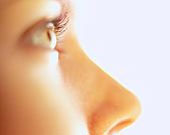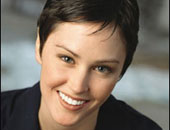| In our continuing article on chemicals in beauty products, here are some more ingredients for which you should look out.
How do you know if that new shampoo is really as miraculous as it appears? Can it actually be that good or is there a hidden catch? The truth is that most of these products are full of harmful chemicals that may damage your skin irreparably. Read on to find out what chemicals should set off a warning bell when you see them listed as ingredients.
Sodium Lauryl Sulphate (SLS)
This compound may sometimes also be referred to as sodium dodecyl sulphate (SDS). This is a carbon compound that also has elements like sulphur and sodium in it. It is a surfactant i.e. it encourages the production of foam when mixed with water. It is a major ingredient in detergents and floor cleaners.
Due to its foaming properties, SLS is included in products like toothpaste, soap, shampoo, bubble baths, etc. Since it is a detergent, SLS removes the natural oils from your skin. This leaves your skin dry and irritated, making you prone to skin conditions like eczema, dermatitis, psoriasis, and acne. If you use a soap containing SLS and some of the foam accidentally gets into your eyes, it could lead to inflammation.
The real danger though is that SLS can combine with other substances in beauty products and form potentially carcinogenic compounds. This could, in the long run, lead to cancer. Also, SLS may be sometimes contaminated by a substance called 1,4-dioxane that has been classified as a probable carcinogen. These statements have been highly contested by soap manufacturers however, who term these concerns as baseless.
Formaldehyde
Also called formalin, this chemical is more famous for its use as a preservative. It is used in laboratories and museums to preserve animal specimens. It is also used in morgues, as a constituent of embalming fluid. It is generally produced when carbon compounds are burnt as fuel. It is also a part of the smoke generated during forest fires, exhaust from automobiles, burning of tobacco, etc. Miniscule amounts of this compound are even produced in the human body, as a result of the various metabolic processes taking place. The burning sensation you experience if you are bitten by an ant is due to the formaldehyde in their saliva.
Formaldehyde is often used as an ingredient in shampoos, nail polish, and some creams. It is acidic and is the chief cause of the irritation you may experience when you use these products. In some cases, coming into contact with this substance can trigger an allergic reaction. Studies have also been carried out linking formaldehyde to increased risk of asthma and cancer.
Alcohol
Alcohol can be chemically obtained from a variety of substances, most notably petroleum. Different varieties of alcohol are available for many purposes. Generally, isopropyl alcohol is used in most beauty products. These include perfumes, hair gels and sprays, body lotions, cologne, after-shave lotions, and hair colouring products.
Alcohol dehydrates that area of your skin where it is applied or sprayed. Also, alcohol is toxic in nature. If inhaled in large amounts, constantly applied to the skin, or accidentally ingested, it can cause what is known as alcohol poisoning. This is a serious condition that manifests itself through a variety of symptoms. Symptoms include nausea, dizziness, headaches, reduced functionality of the central nervous system, coma, etc. In extreme cases, it can be fatal.
Talc
Talc is a mineral that is primarily composed of magnesium silicate. It is most commonly known as talcum powder. Talc is a constituent of powder foundations, blushes, baby powder, etc. If inhaled, talc causes irritation in the delicate tissue that lines your lungs. Researchers have also linked talc to cancers of the lungs, skin, and ovaries. Talc is also sometimes contaminated with asbestos particles, which is a known carcinogen.
Make it a point to know what the products you use could do to your body. Something that claims to be natural need not always be a safer option. After all, it is your body at stake.
How do you choose beauty products for yourself? Are you tempted by advertisements or do you check to see if they contain harmful ingredients? To share your tips, views, and experiences, click here.
|
 On a hunt for the perfect nose? If you have been toying with the idea of going in for a nose job, here�s what you should know.
On a hunt for the perfect nose? If you have been toying with the idea of going in for a nose job, here�s what you should know. 
